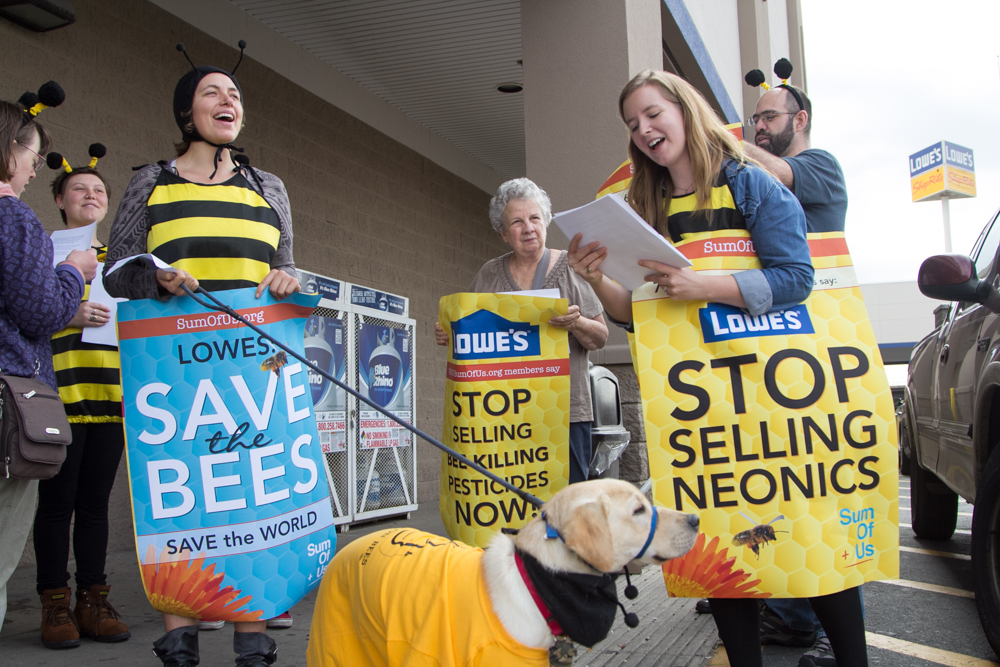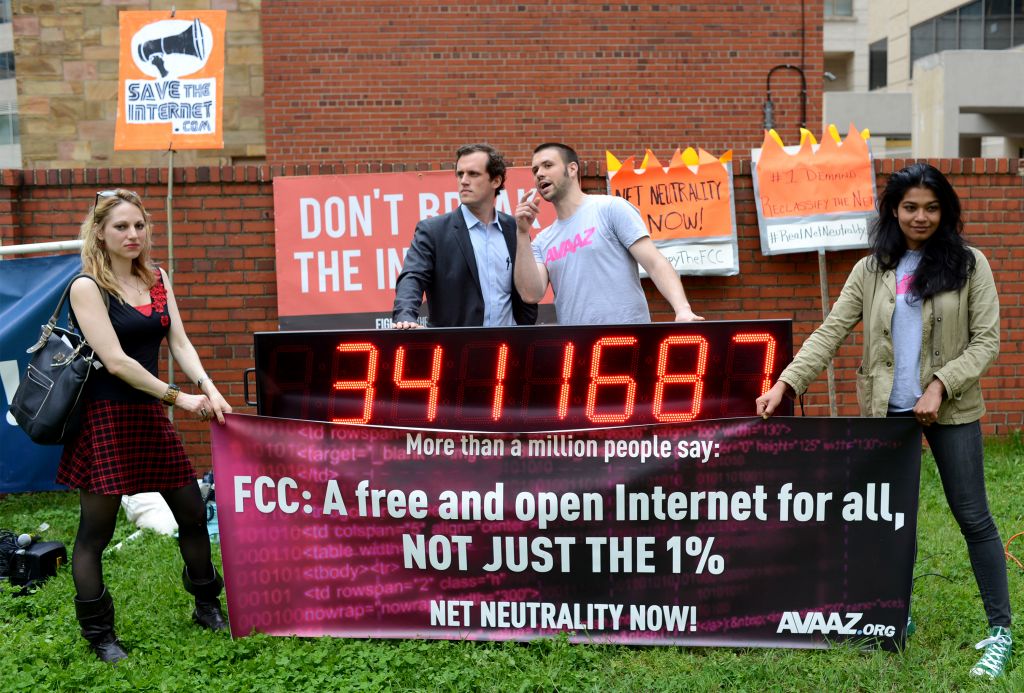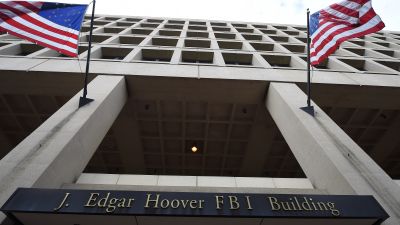
A reader, Harriet Glickman, asks:
“Has anyone examined whether the four to five petitions people like me sign online every day have any effect at all on legislators, corporations, etc., to whom they are directed? Of course I know many of them are just another way to get donations but the issues and problems they address are real. I’d like to know if they actually make a difference. Any thoughts?”
Short answer: It turns out many people are studying digital activism — writing papers, holding conferences, generating digital business models and coining terms like “slactivism.” There’s even a definition in the Oxford English Dictionary:
slacktivism
(also slactivism) informal
[MASS NOUN] Actions performed via the internet in support of a political or social cause but regarded as requiring little time or involvement, e.g. signing an online petition or joining a campaign group on a social media website or application.
Online petitions are a tactic that have been used in many successful campaigns, from stopping the Keystone XL Pipeline to preserving net neutrality.
A Petition is a Tactic
Dave Karpf, a professor at George Washington University and author of The MoveOn Effect: The Unexpected Transformation of American Political Advocacy, says online petitions are an early-stage political tactic that help build a broader campaign and serve a number of purposes:
- They can send a signal of public opinion to a decision maker.
- They tell the media there is enough public attention to do a story.
- They build a list of people who are interested in an issue.
- They can spur additional action and raise money.

A petition for peace signed by 350,000 school children was presented to Secretary of State William Jennings Bryan in 1915 to send to the leaders of the warring European nations. (Library of Congress)
Online petitions aren’t so different from their paper predecessors of the past, when clipboard-bearers collected signatures and handed them to legislators. “Those petitions alone were not going to achieve change, but they were a useful first step,” says Karpf. “In the current digital moment, e-petitions allow us to collect signatures more quickly and spread information faster.” But as the barriers to entry get lower, more petitions — good and bad — pop up in email, on Facebook and in Twitter feeds.
But don’t dismiss the good with the bad, says Karpf. “There is an artistry, a skill and a science to this, and not every petition is going to be well-formed or well thought-out.”
A Credible Theory of Change
Savvy organizations that launch online petitions will have what digital campaigners (and those who study them) call a credible “Theory of Change.”
“Signing a petition to end nuclear war or to solve climate change is pointless,” says Jason Mogus, a strategist and founder of NetChange Consulting. Instead, he says, an experienced organization will “anchor its work with a petition, but then it is up to the campaigner to design a strategy.”
The strategy needs more than a long-term, big-picture goal: It needs to be directed at a clear target — such as a person, government or company — and have a clear action it wants the target to take. Mogus, who worked on the successful campaign opposing the Keystone Pipeline, says President Obama was the target of that campaign because the pipeline required a presidential permit to cross the Canadian border into the US. The clear action Obama could take was refusing to approve the pipeline. And the big-picture, long-term goal was to cut down on the carbon emissions that would come from burning the tar-sands oil the pipeline would have helped transport.

Activists from SumOfUs.org rallied outside a Lowe’s in Philadelphia in 2014 to build awareness of bee-killing pesticides — known as neonics. More than 750,000 signed the petition calling for Lowe’s shareholder and executive leadership to stop selling the pesticides. (SumOfUs/Flickr cc 2.0)
“What they did with those signers afterward, how they recruited people to take leadership on the ground, how they delivered the petition, how they pulled stories from action takers so they could highlight them in the media or at public events — that’s when things get interesting,” says Mogus. The campaign also went after Obama’s big donors to get them on board to make sure the president got the message.
“No petition, and no single act, will solve the climate crisis,” agrees Karpf. “It is too big, too complex. It will take too long. But a well-timed, well thought-out petition that draws public attention and gets a lot of people engaged will yield a residual list of people.”
That list of interested people is just the beginning. Karpf cites as an example the petitions that cropped up immediately after Cecil the lion was killed by an American dentist in Zimbabwe. Some had a specific goal, such as calling for the dentist to lose his license, while others, Karpf says, were a collective scream to say “this is terrible, we hate it.”
“Those lack a compelling ‘Theory of Change,'” explains Karpf, who studied how SumOfUs.org, an online group that advocates for human rights and economic issues, responded to the killing. The group’s leaders saw their members were frustrated, so they came up with a petition to pressure airlines to change their policies and ban the transportation of endangered animals. “It was a pretty reasonable ask,” says Karpf. A number of international airlines complied immediately. When Delta Airlines was slow to act, SumOfUs.org targeted it specifically and as a result Delta agreed, followed immediately by United, American and Virgin Atlantic.
“That’s a policy change,” says Karpf. “It didn’t bring the lion back to life, but it gave people an outlet to speak out against injustice and see that some change was made. It is empowering.”
Educated Signers
Before signing an online petition it’s important to see who is sponsoring it, and to decide whether or not the organization is legitimate. “It’s good to be suspicious,” says Mogus. “A lot of petitions don’t ever get delivered to anyone.” Here are a number of things to keep in mind:
1) Do you trust the organization sponsoring the petition?
2) Is there a target?
3) Do you think this change is possible? Has the organization broken the problem down into winnable steps?
4) You may be asked for money.
5) You may be asked to do more if you care about the issue.
6) You may be asked to spread the campaign on social media.
7) If the cause is really important to you, you may be asked to become a leader in your community.
If you care about an issue, your job is not done after you sign, says Mogus. “Social change has almost never been made because of what [organizers] call ‘low-risk, loose ties’ types of actions.” The classic example of a “high-risk, close ties” action, he says, comes from the civil rights movement of the ‘50s and ‘60s, when protesters got arrested at segregated lunch counters. Those protesters trusted organizers and put their physical safety — even their lives — on the line. The campaigners’ job is to show people how they can create change by breaking down overwhelming problems into winnable steps. “If they haven’t done that for you, I suggest you ignore their petition,” says Mogus.
A Short-Term “Theory of Awesome”
Some petitions don’t stand a chance of changing the world, but it still feels good to sign them, says Karpf. Instead of upholding a “Theory of Change,” they have what organizers call a “Theory of Awesome.” Those are the petitions that, for example, invite people to wish Michelle Obama a happy birthday. Signing that petition, says Karpf, will not significantly change the first lady’s day, but people feel good sharing their love for her.
Another type of petition that feels good to sign functions more like a collective primal scream. Karpf says he gladly signed a MoveOn.org petition calling for the coach of the Washington Wizards basketball team to be sacked after a series of losses. The petition helped fans vent their outrage, but “we probably shouldn’t fire coaches or set policy based on the brief input of people who are mad that a game was lost,” says Karpf. “The truly bad petitions,” he says, are the ones that address a serious issue but squander the opportunity to turn the public’s energy and outrage into action.
I Signed What?
Kate Krontiris, a civic researcher and strategist affiliated with the Berkman Klein Center at Harvard, studies what motivates people to engage in civic activity, whether through signing a petition or chaining themselves to the White House fence. One of her key findings is that 48.9 percent of the US adult population is made up of “interested bystanders,” They pay attention to issues and value civic engagement, but they find it difficult to publicly voice their opinions or take action.

Activists rally in front of the FCC to oppose proposed net neutrality rule changes that would essentially end the free and open internet in September 2014. (Stephen Melkisethian/Flickr cc 2.0)
Krontiris describes a hierarchy of civic engagement valued by interested bystanders that is analogous to a ladder. Simply sharing an opinion privately is the bottom rung. The next is the act of signing an online petition. Additional steps include voting, protesting and campaigning. Finally, at the very top, is organizing — when you’ve climbed so high within a movement that you become a leader, encouraging others to climb the ladder behind you.
Signing an online petition is such a low rung, Krontiris found, that people often can’t remember the topic of the last one they signed. It’s a paradox that while interested bystanders value civic engagement, they don’t value petition-signing highly — but they do it anyway. Krontiris says signing petitions can make something happen, but the act itself is not always “impactful and meaningful for the participant who signs.”
Thank You For Joining
Your digital signature, however, means a lot to an advocacy organization. When you add your name and email address to an online petition, each digital organization considers you a member. In the past, if you joined a cause, you wrote a small check to the organization, which then sent you mail during the year (and perhaps a bumper sticker) and kept you abreast of the cause. At year’s end it would ask for more money. Today, as soon as you sign a petition you are on the member list and easy to reach by email. Campaigns do not hesitate to send signers petitions from related campaigns and to ask them to get involved. Mogus works with a number of organizations whose lists have grown because a petition went viral. He says many people might not remember how they got there, but it is the organization’s job to build a relationship with those people, connect with them and encourage them to engage in future causes.
Do some research before you sign. Your goal may be to support the Standing Rock Sioux in the fight against the Dakota Access Pipeline, but there were as many as 10 petitions from 10 different organizations advocating for the tribe online. And as soon as you answer a call for help, that organization will call you a member.
Consider petitioning organizations’ strategies and their business models. Some of these groups, like SumOfUs.org and MoveOn.org, are 501(c)(4) nonprofits and others, like Care2.com and Change.org, are for-profit B-corporations, geared toward social change and able to invest profits back into the company. You can donate to the cause on all platforms, but a company like Care2.com sells advertising and Change.org offers sponsored petitions. Recently, however, Change.org announced it is changing to a crowd-funding model, launching in January.
The strongest social change organizations will push the most viable and potentially viral petitions forward, strengthening language, providing strategic advice and connecting petitioners with the media, benefiting both the host organization and the causes. Petitions are only the beginning of a campaign. A strong petition helps fuel a fight that requires actual leadership, strategy, organization, funding and ongoing efforts from people who care enough to enter the fray after they add their name and hit “enter” on the computer.




